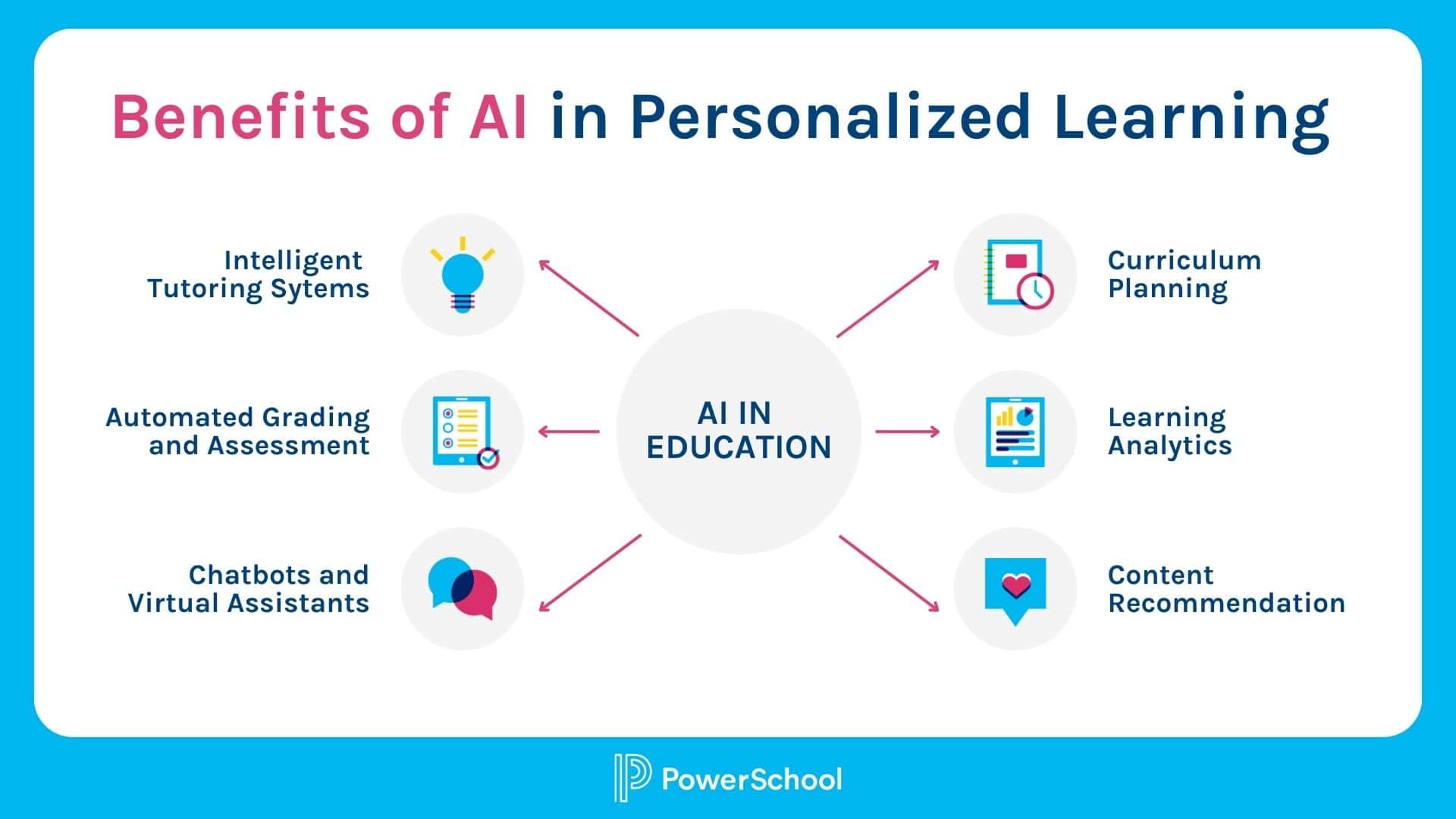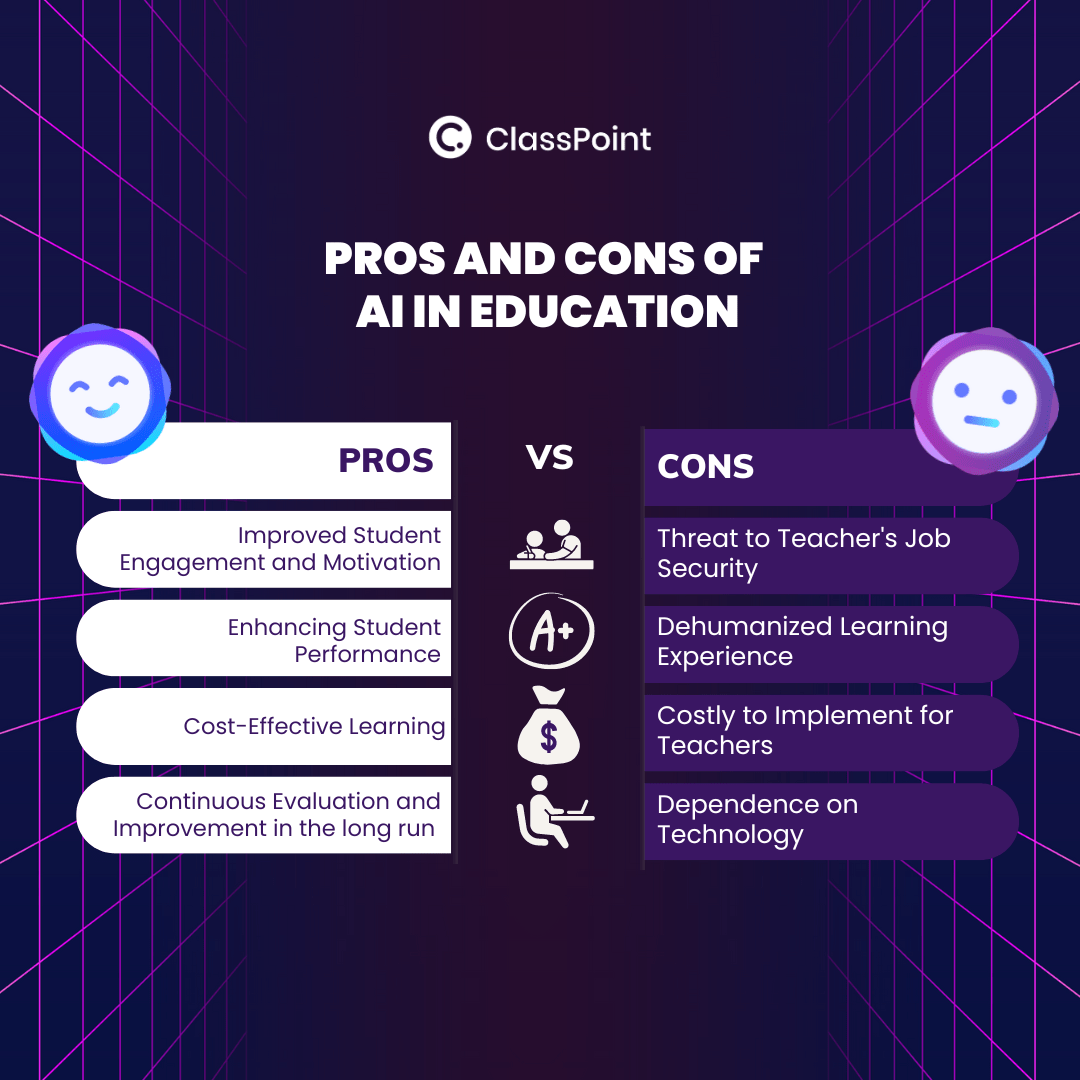
Predictive Technologies and AI in Education
Predictive technologies and AI are transforming education by providing tools to analyze data, identify patterns, and predict student outcomes.
Below is a summary of some of the popular tools and their attributes:
| Tools | Attributes | Outcomes |
|---|---|---|
| Edmentum and DreamBox | Use AI algorithm to adapt to learning speeds and styles | Personalized learning experience for learners |
| ChatGPT | NLP to provide responses to prompts | Organizing thoughts and creating content |
| Grammarly | AI-powered suggestions | Refine writing |
| Stable Diffusion and Midjourney | Use prompts to provide images | Create images as inspiration or prototype |
In my experience, I use AI tools quite creatively. One tool I love to use is Suno.ai. This is a music writing tool based on prompts and genre. I had a poem I wrote that I really liked and always wanted to make it into a song. I’ve also made music of other genres, like Electroacoustic or Instrumentals. What I hope to achieve with this is to create music that can be therapeutic for adolescents with mental health issues.
Enjoy the song!
Benefits of AI in Education

One of the main benefits of AI is in personalized learning, where AI allows instructors to create intelligent learning systems that can save time by automating grading and assessment, virtually assist and support learning, plan curriculum to adapt to individual learner’s needs, analyze learning patterns, and recommend the most crucial learning materials for individuals.
The table below summarizes the benefits of different AI tools:
| Category | Description | Examples |
|---|---|---|
| Personalized Learning | Customizes educational content based on individual student progress, identifying gaps in understanding and recommending targeted exercises or resources. | Khan Academy |
| Automation of Administrative Tasks | Automates repetitive tasks such as grading, attendance tracking, and performance analysis, freeing educators to focus on teaching and engaging with students. | AI grading tools, automated attendance systems |
| Adaptive Learning Environments | Creates dynamic learning experiences by adjusting content and difficulty levels in real time based on a learner’s interactions and performance. | Smart Sparrow |
| Enhanced Accessibility | Provides support for students with disabilities, enabling inclusive education through features like text-to-speech, speech-to-text, and immersive reading applications. | Microsoft Immersive Reader |
Challenges of AI in Education

Despite having so many benefits, there are also many challenges AI faces :
- Lack of basic technological infrastructure: Many schools and universities lack the financial or technical infrastructure to implement AI-driven tools effectively (Birchwood University, 2024).
- Lack of trained educators: Teachers and administrators may hesitate to adopt AI due to a lack of training or fear of technology replacing traditional teaching roles (Birchwood University, 2024).
- Bias in the algorithm: AI systems may unintentionally perpetuate biases in their training data, leading to inequitable outcomes for certain student groups (Jennings, 2023).
To address these challenges, schools could seek public-private partnerships to fund their AI initiatives and develop professional programs to train educators.
Ethical Considerations of AI in Education
The image below perfectly summarizes all the ethical considerations of AI in education:

Educators can ensure ethical AI use by:
- Implementing robust data protection measures.
- Providing clear guidelines on how AI tools are used and evaluated.
- Advocating for diverse datasets to minimize bias in AI systems.
Future Directions in EdTech
Beyond AI, there are several technologies that will sure reshape education in the next 5 – 10 years:
| Technology | Description | Examples |
|---|
| Augmented Reality (AR) and Virtual Reality (VR) | – Offers virtual field trips and interactive labs – Enhances engagement through immersive experiences | Google Expeditions, Oculus |
| Blockchain | – Secures academic records – Simplifies sharing verified credentials with employers/institutions | Digital credential platforms |
| Internet of Things (IoT) | – Tracks student engagement and performance in real-time – Improves classroom management and personalization | IoT classroom tools |
| Gamification | – Uses game mechanics to boost motivation – Encourages collaboration and engagement | Classcraft |
| 5G Connectivity | – Enables high-quality online education – Supports AR/VR in remote areas | High-speed learning platforms |
But, as we envision a more diverse future, we should still consider AI’s role in education and how we can responsibly use it when learning. Here is a video that shares how:
